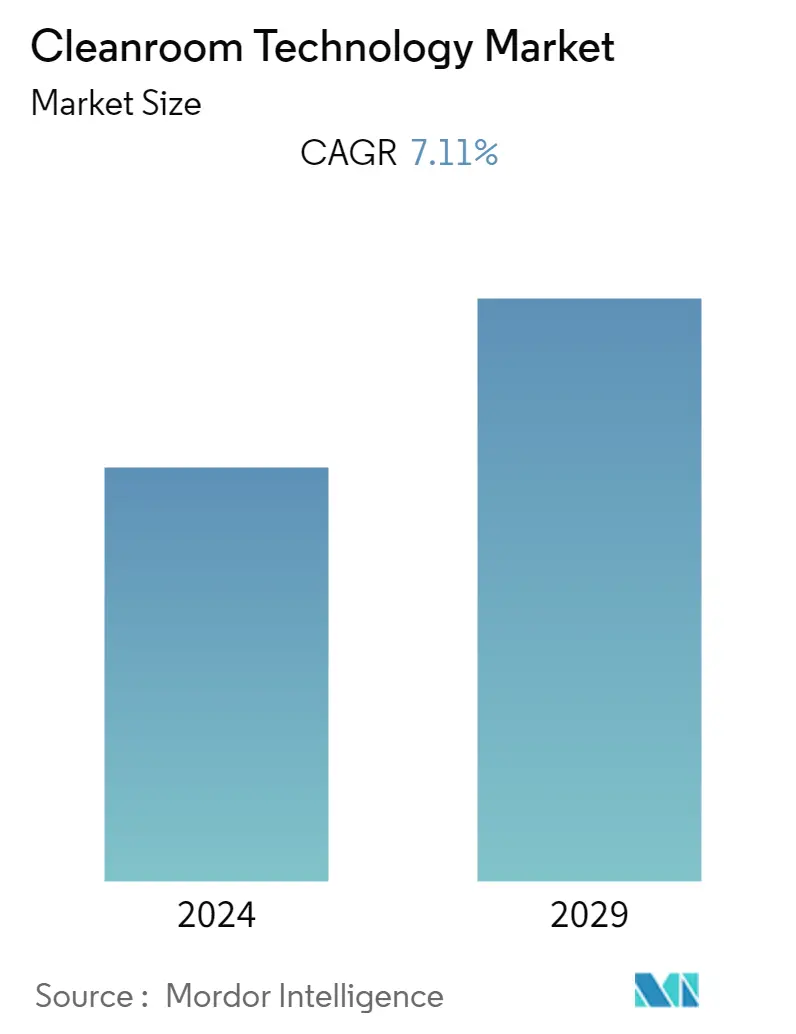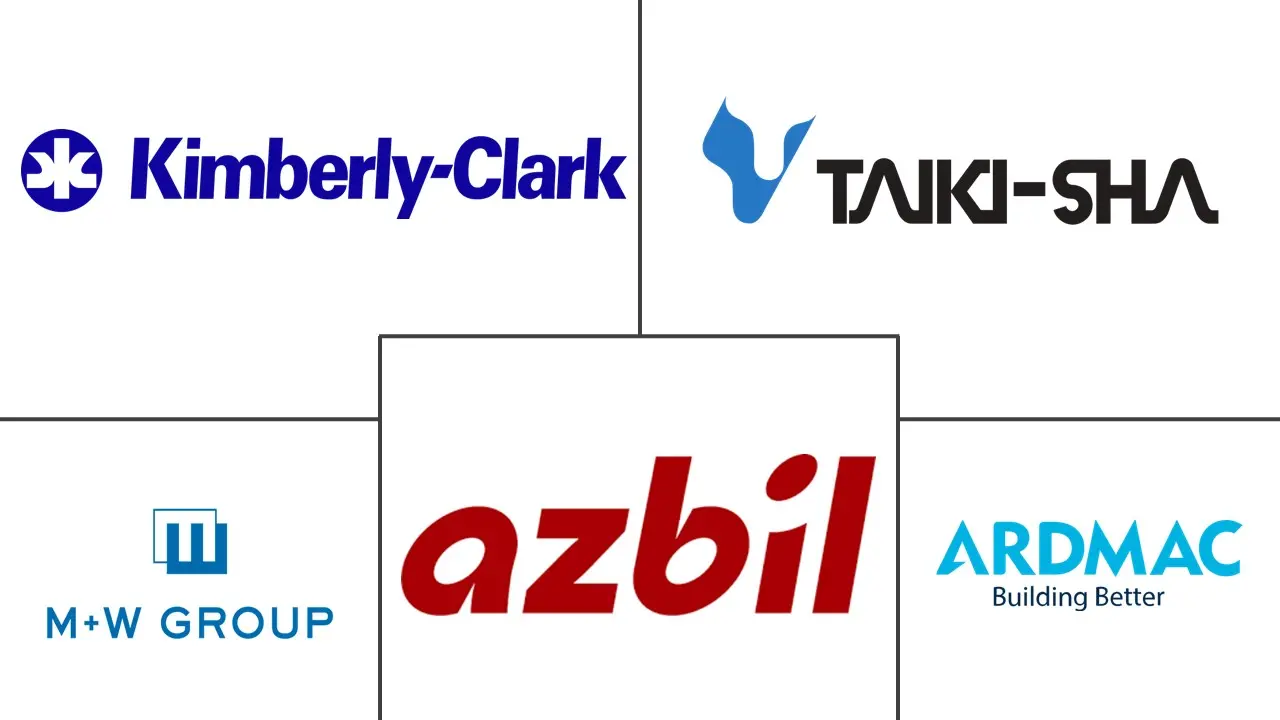Market Size of Cleanroom Technology Industry

| Study Period | 2019 - 2029 |
| Base Year For Estimation | 2023 |
| CAGR | 7.11 % |
| Fastest Growing Market | Asia Pacific |
| Largest Market | North America |
| Market Concentration | Medium |
Major Players
*Disclaimer: Major Players sorted in no particular order |
Need a report that reflects how COVID-19 has impacted this market and its growth?
Cleanroom Technology Market Analysis
The cleanroom technology market was valued at USD 8.17 billion the previous year and is expected to register a CAGR of 7.11%, reaching USD 12.11 billion by the next five years.
- Due to the increasing demand for advanced cleanroom technology across various industries where stringent contamination control is vital for ensuring product and process safety and effectiveness, the objective is to effectively regulate and minimize contamination. This involves maintaining precise control over the levels of dust, airborne microorganisms, aerosols, and vaporized particles on a per-cubic-meter basis.
- Development of the modern, clean room began during the Second World War to improve the quality and reliability of instrumentation used in manufacturing guns, tanks, and aircraft. During this time, HEPA filters were also developed to contain the dangerous radioactive, microbial, or chemical contaminants that resulted from experiments into nuclear fission, as well as research into chemical and biological warfare. The evolution of clean rooms gained momentum as a result of NASA's space travel program in the 1950s and 1960s. It was during this time that the concept of 'laminar flow' was introduced, which marked a turning point in clean room technology.
- Notably, this concept gained wide popularity during COVID-19 owing to the significant rise in electronics manufacturing along with huge investment in the pharmaceutical industry for vaccine production. The introduction of mRNA vaccine technology and the speed with which the COVID-19 vaccines were approved and manufactured stand out as amazing innovations. Right now, there are several mRNA-based vaccines in the pipeline, and one thing that all of them have in common is the need for sterile processing. Moreover, the pandemic increased demand for PPE kits and gloves, which has led to increased production of PPE kits, thereby assisting the market growth.
- With the growing demand for electronics, cleanroom technology providers are witnessing increased business. As a result of this, governments from developed and developing nations are significantly working towards securing ample cleanrooms to handle any scarce situation domestically. For instance, the 2022 CHIPS Act was officially passed by the US government in 2022. Under this act, the US Government wants US companies to build cleanrooms in the USA for semiconductor manufacturing instead of outsourcing to cleanrooms in foreign countries. After introducing this act, foreign semiconductor manufacturers have also been planning new US-based cleanrooms to get US government funding.
- Cleanrooms are gaining popularity in various end-user markets as a controlled environment has become a necessity for maintaining high-quality products. However, the cost of a cleanroom is not only extremely investment-intensive to build, but operational costs can also depend on the number of required air exchanges and filtration efficiency. The operation can be extremely costly, as maintaining the appropriate air quality means the room has to be in constant operation. Not to mention, energy-efficient operation and continuous adherence to cleanroom standards make a cleanroom one of the most important infrastructures for manufacturing technology and laboratories. This is expected to challenge the market's growth.
- Cleanrooms have been deeply established as an integral part of manufacturing processes, especially in semiconductor and electronics manufacturing, as cleanliness can be ensured in their regulated and sterile conditions, avoiding possible contamination by harmful bacteria and pollutants. The COVID-19 pandemic rendered the need for a myriad of supplies and set conditions so severe that cleanroom technology had to be brought to the forefront of manufacturing development, serving as a foundation for action in keeping the virus at bay.
- Thus, the significant boost in the semiconductor industry boosted by last year's pandemic lockdown orders as changing consumer habits, driven by the rise in remote work, distance learning, gaming, entertainment, and internet shopping - significantly increased demand for consumer electronic devices to the point that demand for semiconductors far outpaced production. Demand for semiconductors continues to surge far beyond the global capacity for supply as digitization expands into every facet of daily life. Many of the world's largest fabricators, like Intel and the Taiwan Semiconductor Manufacturing Company (TSMC), are expanding capacity with new fabrication facilities to satisfy that demand, which has positively impacted the market studied.
